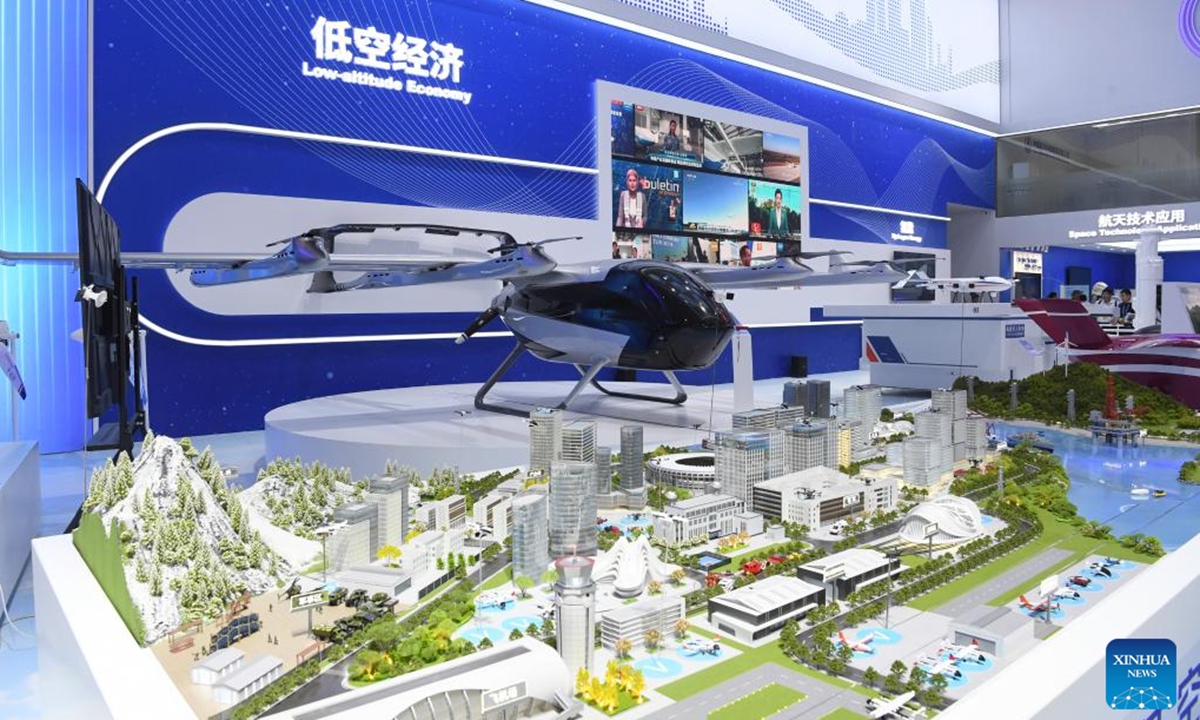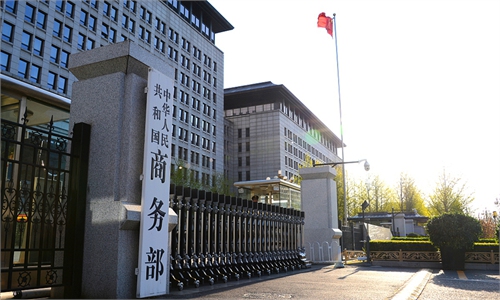
This photo taken on Nov. 13, 2024 shows the ZG-ONE electric vertical take-off and landing (eVTOL) aircraft at the low-altitude economy area of Airshow China in Zhuhai, south China's Guangdong Province. A low-altitude economy area is set at the 15th China International Aviation and Aerospace Exhibition, also known as Airshow China, showcasing related products and application scenarios. (Photo: Xinhua)
China's low-altitude industry is gaining steam in the infrastructure construction, as more industry players vow to further upgrade the operation efficiency of unmanned drones while preventing potential risks.
During the Global Low Altitude Economic Forum 2024 Annual Meeting held on Wednesday in Beijing, multiple companies presented their latest technological progress in a demonstration of how rapidly the sector is developing.
Zhu Shengli, co-founder and CMO of Beijing-based i-Kingtec Co, told the Global Times that the company's intelligent drone garage allows for completely unmanned operation, including self-patrol and changing batteries, and can support drone patrol operations in a maximum area of 1,000 square kilometers.
"One of the company's major cooperation partners is the State Grid, as China had over 920,000 kilometers of high-voltage power grid nationwide by the end of 2023. As of now, i-Kingtec has launched around 1,000 intelligent drone garages in 15 provinces to secure normal operations of power transmission networks and other power facilities, such as wind and photovoltaic farms," he said.
The Global Times observed that anti-drone equipment providers were also popular at the meeting's exhibition area.
Zhu Jianyu, a representative from CTRS Airspace Technology Jiangsu Co, told the Global Times on Wednesday that the company had received dozens of client queries for the company's products just a few hours after the opening of the meeting, as the whole industry is concerned about potential risks amid the sector's rapid development.
CTRS' anti-drone equipment can detect suspicious drones around important locations such as airports and power plants or set up a temporary no-fly zone for drones, said Zhu, adding that they have collaborated with airports in Beijing, Shanghai, Hong Kong and Shenzhen in South China's Guangdong Province.
By the end of August, the number of registered drones in China totaled 1.987 million, according to the People's Daily citing an industrial report.
Industry analysts suggested that China has accelerated the construction of relevant laws and infrastructure to ensure that the low-altitude economy can become a major growth engine for the economy.
Luo Jun, executive director of the China Low Altitude Economic Alliance, which hosted the meeting, stated on Wednesday that as a vital part of China's three-dimensional transport network, the scale of China's low-altitude economy is expected to hit 3 trillion yuan ($413.68 billion) in 2030, while two to three years are needed to further consolidate the current infrastructure.
Global Times



